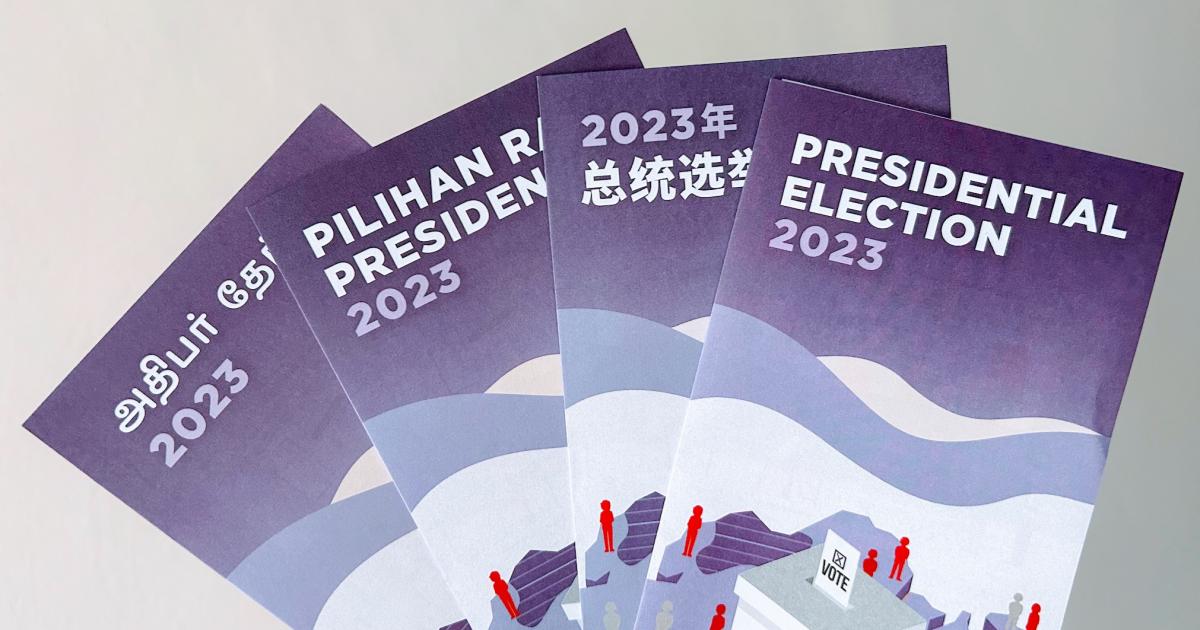Polling Day for the upcoming presidential election is on Friday, Sep. 1.
Thursday, Aug. 31, has been designated Cooling-off Day, and special rules will apply from Cooling-off Day till the close of polling at 8pm on Polling Day.
Campaigning and election advertising are prohibited during this "cooling-off period", said the Elections Department (ELD) in a statement on Aug. 30.
The prohibition applies to candidates and their teams, as well as the general public.
This practice was first instituted in the 2011 election to let voters reflect rationally on various issues raised at an election before going to the polls.
What cannot be done
"Election advertising", which is prohibited during the cooling-off period, is defined as "any information that can reasonably be regarded as intended to promote, procure or prejudice the electoral success of a candidate or to otherwise enhance or prejudice the standing of a candidate," said ELD.
Meanwhile, campaigning activity is also prohibited, including the publishing, display of, or wearing of clothing with a candidate’s symbols.
ELD highlighted the following list of examples of activities that are prohibited during the cooling-off period:
- Publishing any online election advertising, whether paid or unpaid. This includes "sharing, resharing, reposting or boosting" of existing material, as well as broadcasting of online meetings accessible to the public.
- Publicly displaying non-online election advertising, such as banners, flags, or posters. "Relocating, altering or modifying existing non-online election advertising" is also not allowed.
- Canvassing, walkabouts, door-to-door visits, visiting homes and workplaces of voters for election-related purposes.
- Any form of public assemblies or meetings (whether online, in person, or both) which engage election issues;
- Wearing, using, carrying or displaying a candidate’s allotted symbol or campaign propaganda. However, there is an exception for candidates, who are allowed to wear a replica of the symbol allotted to them.
ELD added that candidates and their supporters "are expected to comply with all relevant laws during the cooling-off period and should refrain from conduct that goes against the spirit of the cooling-off period."
The candidates "should be mindful of how they conduct themselves in public and exercise due care to avoid any action that may be perceived as campaigning," ELD added.
What is allowed
ELD also shared a list of exceptions to the prohibitions. The following are allowed during the cooling-off period:
- News reports by authorised news agencies relating to election matters.
- Communication of content between two or more individuals that is of a private or domestic nature using electronic means.
- Online advertising that was already published before Cooling-off Day, provided that it is not shared, reshared, reposted or boosted during the cooling-off period.
- Non-online election advertising, such as banners, flags, or posters, which is lawfully displayed before the start of Cooling-off Day and has not been relocated, altered or modified during the cooling-off period.
- Public display of non-online election advertising in an "office or committee room of a candidate", or outside it on an exterior wall or exterior window, provided that it consists of permissible electoral content and is for the sole purpose of indicating that the space is the candidate's office or room.
What not to wear on Polling Day
ELD said that on Polling Day, voters should "refrain from wearing attire with images, or carrying with them items to the polling station, that may be construed as influencing other voters or canvassing support for any particular candidate."
Those who do so may be turned away by election officials at the polling stations.
ELD also provided examples of such attire or images that should not be worn or carried:
- Shirts, clothing, bags, or badges with prints on them that are identical to or closely resemble a candidate’s allotted symbol, or bear words that may be interpreted as showing support to a candidate.
- Objects that are identical to or closely resemble a candidate’s symbol and would likely be associated with a candidate by the public.
Here are the symbols to avoid:
Top photo by Nigel Chua
If you like what you read, follow us on Facebook, Instagram, Twitter and Telegram to get the latest updates.



